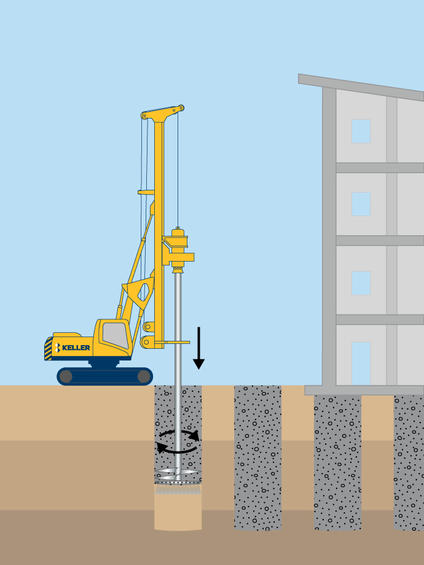Wet soil mixing, also known as the deep mixing method, improves the characteristics of weak soils by mechanically mixing them with cementitious binder slurry.

Common uses
Process
A powerful drill advances a contra mixing tool as binder slurry is pumped through the connecting drill string, mixing the soil to the target depth. Additional mixing of the soil is completed as the tool is withdrawn to the surface. Columns, typically, are constructed at diameters of 1.0-1.5 metres
This process constructs individual mixed columns or rows of overlapping columns with a designed strength and stiffness. In conjunction with finite element analysis, the system is designed to support foundation or embankment loadings.
Specialist Contact | Nigel Matthews - [email protected] - +44 (0)7918 905057
Advantages
Quality assurance
Quality is controlled and assured through column installation protocols and the results of relevant laboratory and field-verification tests. Each column is provided with a chart-log, which typically comprises: column number, mixing tool details, mixing depth, mixing time, slurry specification, injection flow rate and pressure, total volume of slurry used, mixing tool velocities and rpm during penetration and withdrawal and torque of the shaft.
The mixing energy and binder content is calculated from this information to match design requirements.
Specimens of stabilised soils for testing are usually obtained from fresh columns with a wet grab.
Advanced core drilling and other field-testing methods can also be used to obtain specimens and to inspect the continuity, uniformity and stiffness of deep soil mixing columns. The selection of suitable verification methods depends on their relevance, accuracy and applicability in relation to the purpose and pattern of soil treatment and design properties of stabilised soil.